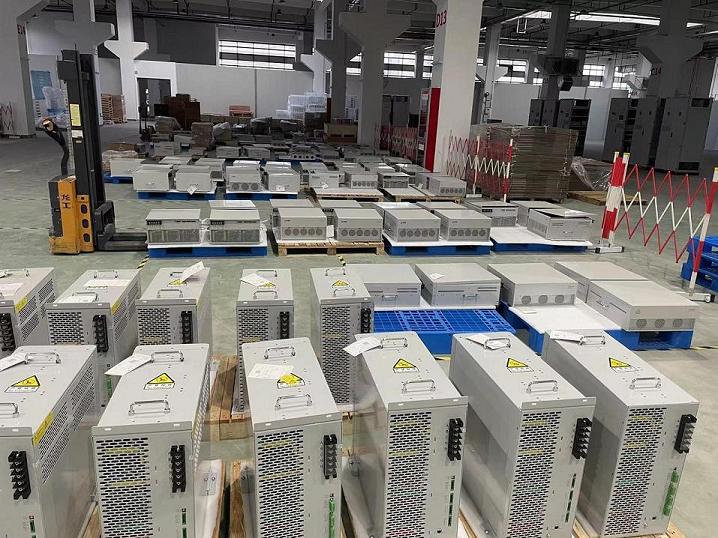
Cuando hablamos de sistemas de energía modernos, a menudo se superponen dos dominios técnicos que no siempre se comprenden completamente juntos: compatibilidad electromagnética (EMC) y calidad de la energía Ambos desempeñan un papel crucial para garantizar que los equipos eléctricos y electrónicos funcionen de forma fiable y eficiente. Para empresas e industrias que adoptan... Generadores de variables estáticas (SVG) y Filtros armónicos activos (AHF) Comprender la relación entre EMC y la calidad de la energía es esencial.

¿Qué es EMC?
Compatibilidad electromagnética (EMC) # Compatibilidad electromagnética Se refiere a la capacidad de un dispositivo o sistema para funcionar con normalidad en su entorno electromagnético sin generar perturbaciones que afecten negativamente a otros dispositivos. En términos más simples, un producto con buena compatibilidad electromagnética (EMC) no se verá fácilmente afectado por el ruido electromagnético externo ni causará interferencias en los sistemas cercanos.
La EMC generalmente se divide en dos componentes:
[si !supportLists] Interferencia electromagnética (EMI) # EMI La energía electromagnética no deseada generada por un dispositivo durante su funcionamiento. Por ejemplo, los convertidores o inversores de potencia pueden emitir ruido de alta frecuencia que interrumpe los sistemas de comunicación o componentes electrónicos sensibles.
Sensibilidad electromagnética (EMS) # Servicios médicos de emergencia La resiliencia de un dispositivo ante interferencias externas. Un dispositivo con un EMS potente mantendrá su funcionamiento normal incluso en entornos electromagnéticos hostiles, como fábricas con maquinaria pesada o redes con cargas fluctuantes.
Juntos, la EMI y el EMS constituyen la base de la EMC. Los fabricantes de todos los sectores deben diseñar productos que minimicen las interferencias y maximicen la resistencia a las perturbaciones.
Calidad de la energía y EMC: la conexión
Mientras que la CEM se centra en las interacciones electromagnéticas, la calidad de la energía se ocupa de la eficacia con la que se suministra la energía eléctrica a los usuarios finales. Problemas como los armónicos, la potencia reactiva, el flicker o las fluctuaciones de tensión pueden dañar los equipos, reducir la eficiencia y aumentar los costes operativos.
Aquí es donde se produce la superposición: una mala calidad de la energía suele generar problemas de compatibilidad electromagnética (CEM). Por ejemplo, el exceso de armónicos generados por cargas no lineales (como variadores de velocidad, centros de datos o máquinas de soldar) no solo distorsiona la red, sino que también contribuye a la interferencia electromagnética. Por el contrario, un diseño de CEM deficiente en los equipos puede agravar los problemas de calidad de la energía, propagando las interrupciones en la red eléctrica.
¿Dónde entran en juego SVG y AHF?
Las redes eléctricas modernas y las instalaciones industriales están repletas de dispositivos no lineales que generan distorsión armónica y demanda de potencia reactiva. En este contexto, los filtros armónicos activos (AHF) y los generadores estáticos de var (SVG) desempeñan un papel fundamental para mejorar la calidad de la energía y la compatibilidad electromagnética (CEM).
Filtro armónico activo (AHF): AHFs Están diseñados para detectar y mitigar corrientes armónicas en tiempo real. Al inyectar corrientes de compensación, eliminan los armónicos dañinos que pueden causar problemas de EMI. De hecho, la reducción de armónicos mejora el entorno electromagnético, disminuyendo el riesgo de interferencias con dispositivos sensibles como equipos médicos, sistemas de telecomunicaciones o instrumentos de precisión.
[si !supportLists] Generador de variables estáticas (SVG): SVG Proporcionan compensación dinámica de potencia reactiva, manteniendo perfiles de voltaje estables y reduciendo el parpadeo. Desde una perspectiva EMC, los SVG ayudan a crear una fuente de alimentación más limpia y predecible, lo que reduce la probabilidad de mal funcionamiento de los dispositivos bajo estrés electromagnético.
Tanto los SVG como los AHF no solo mejoran la calidad de la energía, sino que también mejoran indirectamente Rendimiento EMC estabilizando el entorno de la red y reduciendo las fuentes de interferencia.
Ejemplo del mundo real
Considere una planta de fabricación moderna. Utiliza múltiples brazos robóticos, convertidores de frecuencia y máquinas de soldar. Estos dispositivos introducen grandes cantidades de distorsión armónica en la red, lo que provoca fluctuaciones de voltaje y crea interferencias electromagnéticas. Como resultado, los equipos de prueba sensibles de la misma planta pueden fallar o registrar errores.
Al instalar un AHF, se neutralizan los armónicos, lo que reduce el nivel de EMI en el entorno. Simultáneamente, un SVG garantiza la estabilidad de la tensión, evitando que las máquinas se disparen bajo tensión electromagnética. ¿El resultado? Toda la instalación logra ambos objetivos. mejor calidad de energía y rendimiento EMC mejorado , reduciendo el tiempo de inactividad y garantizando el cumplimiento de los estándares internacionales como IEEE 519 o IEC 61000.
Cumplimiento y demandas del mercado
Las normas globales exigen que las empresas consideren tanto la compatibilidad electromagnética (EMC) como la calidad de la energía en el diseño y la operación de sus productos. Los organismos reguladores aplican las directivas de EMC para garantizar que los equipos no excedan los límites de interferencia y puedan soportar perturbaciones ambientales. Al mismo tiempo, las empresas de servicios públicos y los clientes industriales exigen soluciones que mitiguen los armónicos y optimicen el factor de potencia.
Mediante la implementación SVG y AHF Las empresas pueden cumplir con estos dos requisitos. Minimizan las emisiones que contribuyen a la interferencia electromagnética (EMI) y, al mismo tiempo, mejoran la resiliencia de sus sistemas frente a las perturbaciones electromagnéticas. Para los mercados internacionales, esta alineación no solo representa una necesidad técnica, sino también una ventaja competitiva.
Conclusión
Compatibilidad electromagnética (EMC) es más que un simple requisito regulatorio: es una necesidad operativa en los sistemas eléctricos modernos. Sus dos pilares, EMI y EMS , influyen directamente en el rendimiento estable y confiable de los equipos eléctricos. Al combinarse con los desafíos de la calidad de la energía, resulta evidente que soluciones como SVG y AHF ya no son opcionales sino esenciales.
Al reducir los armónicos, estabilizar la tensión y mejorar el balance de potencia reactiva, los SVG y AHF contribuyen directamente a los objetivos de EMC. A su vez, una mejor EMC se traduce en operaciones más fiables, menos interrupciones y una mayor vida útil de los equipos. Para las industrias que buscan mantenerse competitivas, invertir en estas tecnologías garantiza no solo el cumplimiento normativo, sino también la eficiencia y la resiliencia a largo plazo.
suscríbase a nosotros para disfrutar de los precios del evento y obtener algunos de los mejores precios.
 compatible con la red ipv6
compatible con la red ipv6

